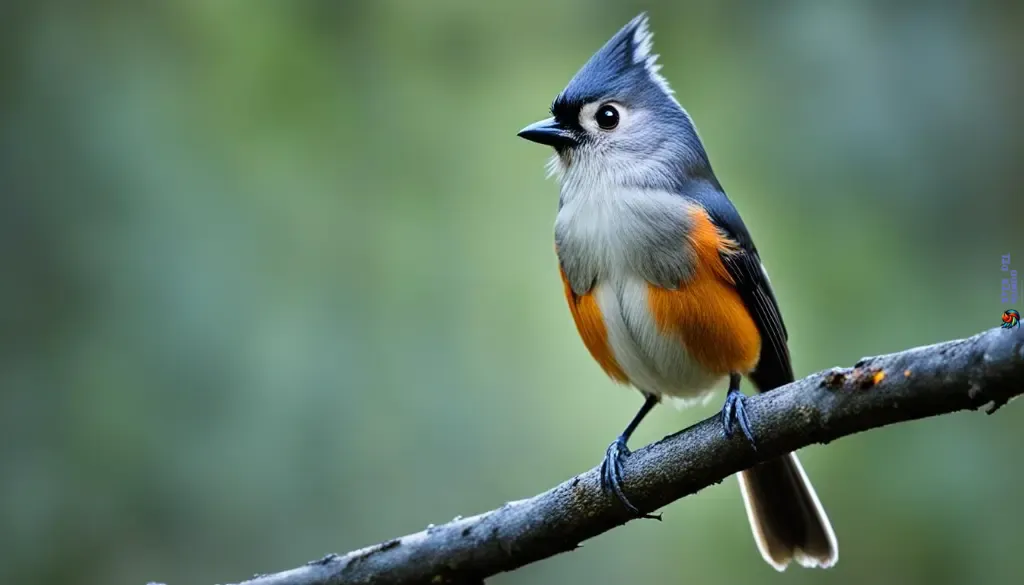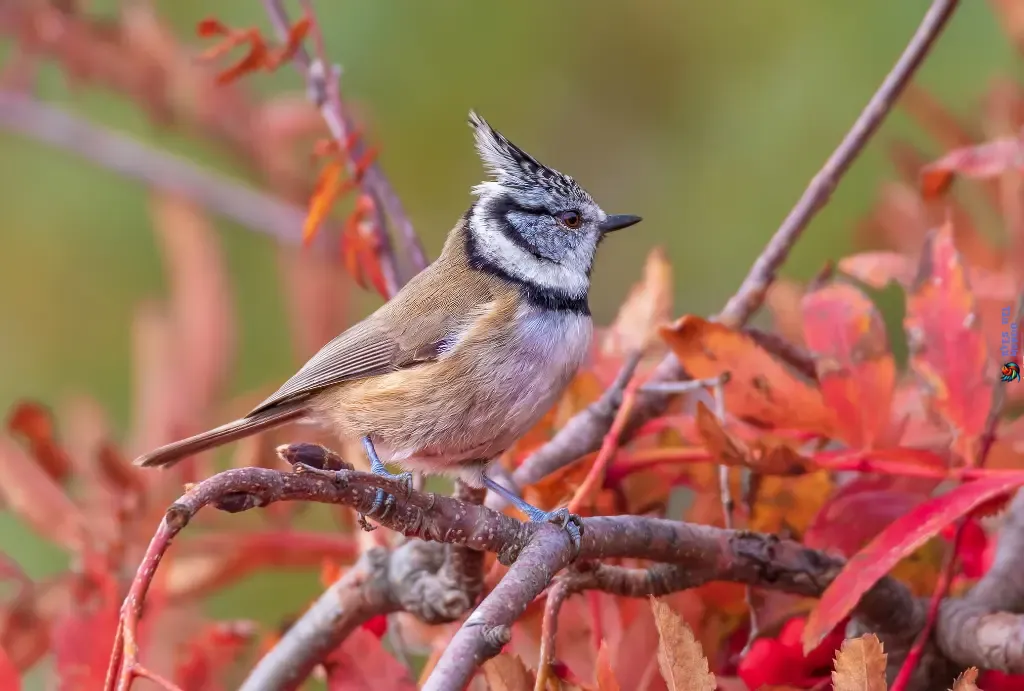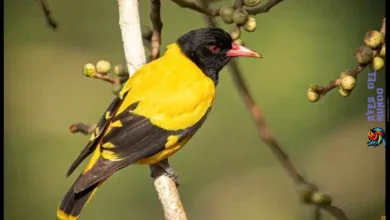Did you know that the tufted titmouse is not only an adorable bird species but also an accomplished singer? This small songbird, found across North America, is known for its distinctive tufted crest, which adds a touch of elegance to its appearance. If you’re curious to learn more about this charming creature and its natural habitat, join us on an exploration of the tufted titmouse’s unique traits and the environments it calls home.

Characteristics of the Tufted Titmouse
Explore the delightful characteristics of the tufted titmouse, a charming songbird and member of the diverse bird species in North America. This small bird, known for its tufted crest and captivating songs, possesses a range of physical features and unique traits that make it stand out in the avian world.
The tufted titmouse is a small-sized bird, measuring approximately 6 inches in length, with a wingspan of around 8-10 inches. It features a prominent tufted crest on the crown of its head, which adds to its distinct appearance and lends this songbird its name.
This bird species showcases a beautiful color palette, characterized by a combination of gray plumage on its upper body and a lighter, creamy underbelly. Its striking black eyes and a prominent black line that extends from its eyes towards its beak add to its allure.
The tufted titmouse is known for its playful and curious nature, often seen hopping and flitting around trees and branches. With its agile movements, it can navigate its woodland habitat and extract food from crevices and cracks in the bark. Additionally, it has a distinctive vocalization repertoire, including a variety of whistles, calls, and songs, to communicate with its mates and establish territory.
«The tufted titmouse is a delightful songbird that showcases both beauty and intelligence,» says ornithologist Dr. Jane Davis. «Its charming appearance, acrobatic behavior, and melodious vocalizations make it a popular bird species among birdwatchers and nature enthusiasts.»
| Characteristics of the Tufted Titmouse | |
|---|---|
| Size | Approximately 6 inches in length, with a wingspan of 8-10 inches |
| Physical Features | Tufted crest, gray plumage on the upper body, creamy underbelly, black eyes, prominent black line extending from the eyes towards the beak |
| Behavior | Playful and curious, agile movements, hop and flit between trees, extract food from crevices in bark |
| Vocalizations | A variety of whistles, calls, and songs for communication and territorial display |
The tufted titmouse’s complex and intriguing characteristics make it a true gem in the bird species of North America. Its beauty, intelligence, and enchanting songs leave a lasting impression on all who encounter it in the wild.
Habitat and Distribution of the Tufted Titmouse
When it comes to the tufted titmouse, understanding its natural habitat and distribution is key to appreciating this captivating bird species. Found across North America, the tufted titmouse prefers a variety of environments, showcasing its adaptability and resilience.

The tufted titmouse is commonly seen in forests, woodlands, and suburban areas, making it a familiar sight to many bird enthusiasts. It thrives in deciduous and mixed forests, where it can forage for insects and seeds among the trees’ branches.
This bird species has a wide range that spans from the eastern United States to parts of Mexico. It can be spotted in states such as New Jersey, Ohio, and Texas, as well as in regions like the Appalachian Mountains and the Great Lakes. However, it is absent from the western regions of North America.
To give you a sense of the tufted titmouse’s range and distribution, here’s a breakdown by geographic region:
| Region | States |
|---|---|
| Eastern Region | Connecticut, Delaware, Florida, Georgia, Maryland, Massachusetts, New Jersey, New York, North Carolina, Pennsylvania, Rhode Island, South Carolina, Virginia, West Virginia |
| Central Region | Illinois, Indiana, Iowa, Kansas, Michigan, Minnesota, Missouri, Ohio, Oklahoma, Tennessee, Texas, Wisconsin |
| Southern Region | Arkansas, Louisiana, Mississippi, Alabama, Kentucky |
These are just a few examples, and the tufted titmouse’s range extends beyond these states. While its distribution may vary slightly within each region, this bird species continues to thrive in its North American habitats.
So, the next time you venture into the forests or explore suburban areas, keep an eye out for the tufted titmouse. Its distinct tufted crest and charming presence are sure to make it a highlight of your birdwatching adventures.
Nesting and Breeding Habits of the Tufted Titmouse
Now that we’ve explored the characteristics and habitat of the tufted titmouse, let’s turn our attention to their nesting and breeding habits. These fascinating bird species are known for their unique approach to raising their young.

The tufted titmouse builds its nest in tree cavities or birdhouses, using various materials such as leaves, moss, bark, and feathers to create a cozy and secure environment for its eggs and nestlings. The female takes the lead in nest-building, while the male assists by gathering materials.
During the breeding season, which typically occurs between April and July, tufted titmice engage in courtship displays and vocalizations to attract a mate. The male performs a lively song and presents food offerings to the female to demonstrate his suitability as a partner.
Once the pair has bonded, the female lays a clutch of around 5-8 white eggs with reddish-brown speckles. Incubation lasts for approximately 12-14 days, and both parents take turns to keep the eggs warm and protected.
After hatching, the nestlings are altricial, meaning they are born helpless and rely on their parents for care and feeding. Both parents play active roles in providing food for the nestlings, bringing a variety of insects, seeds, berries, and nuts.
As the nestlings grow, they become more independent and start exploring their surroundings. Once they are ready to leave the nest, the fledglings may stay close to their parents for a few weeks, gradually learning essential skills for survival.
It’s important to note that tufted titmice may raise multiple broods within a breeding season, making the nesting and breeding period a busy and dynamic time in their lives.
In summary, the tufted titmouse demonstrates remarkable nesting and breeding habits. From their meticulous nest-building to their dedicated care for their young, these birds provide a captivating glimpse into the wonders of nature.
Diet and Feeding Behavior of the Tufted Titmouse
The tufted titmouse, a common bird species in North America, has a diverse diet that includes a variety of foods. This small songbird has adapted to survive in different habitats across the continent, showcasing interesting feeding behaviors and interactions with other species.
The diet of the tufted titmouse primarily consists of insects, seeds, nuts, berries, and fruits. It forages for food in forests, woodlands, and gardens, where it can find an abundance of these resources. Its strong beak allows it to crack open seeds and nuts, while its agile movements enable it to catch insects on the wing.
One fascinating behavior of the tufted titmouse is its habit of hoarding food. These birds are known to gather excess food and stash it away for later consumption. They often store seeds and nuts in the bark of trees, crevices, or even in the ground, forming winter food caches that help them survive during periods of scarcity.
In addition to its diet, the tufted titmouse has unique feeding behaviors. It can hang upside down to extract insects from the undersides of leaves and tree branches. This gymnastic ability allows it to reach food sources that other bird species may find challenging to access.
| Food | Description |
|---|---|
| Insects | The tufted titmouse feeds on various insects, including beetles, caterpillars, and spiders. |
| Seeds and Nuts | They crack open seeds and nuts, such as acorns and sunflower seeds, to extract the nutritious contents. |
| Berries and Fruits | The tufted titmouse enjoys feeding on berries, including elderberries and blackberries, as well as fruits like apples and cherries. |
The tufted titmouse is a sociable bird that often joins mixed-species foraging flocks with other bird species. These flocks enable them to enhance their foraging success by sharing information about food sources and providing added protection against predators. In these groups, the tufted titmouse showcases its adaptability and ability to coexist with other avian species.
«Observing the tufted titmouse as it expertly hangs upside down while searching for insects is a remarkable sight. This behavior demonstrates not only its agility but also its resourcefulness in gathering food.»
In summary, the tufted titmouse is a versatile bird species with diverse feeding habits. Its diet includes insects, seeds, nuts, berries, and fruits, and it showcases unique foraging behaviors such as food caching and hanging upside down. These characteristics make the tufted titmouse an interesting subject for birdwatchers and nature enthusiasts alike.
Vocalizations of the Tufted Titmouse
Immerse yourself in the enchanting world of the tufted titmouse’s vocalizations. This charismatic songbird, known for its vibrant plumage and distinctive tufted crest, fills the North American woodlands with its melodious tunes.
The tufted titmouse is renowned for its diverse repertoire of calls and songs, each serving a unique purpose in its communication and social interactions. Let’s explore some of the vocal expressions of this beloved bird species.
Distinctive Calls
One of the most recognizable calls of the tufted titmouse is its peter-peter-peter call. This three-note whistle is often used to alert other birds of potential threats or to establish territory boundaries. The call resonates through the trees, announcing the presence of this lively songbird.
In addition to its territorial call, the tufted titmouse is known for its various other vocalizations, including a series of high-pitched, repetitive notes. These calls may serve as contact calls within a social group, allowing titmice to stay connected while foraging or flying.
Songs of Serenade
The musical talent of the tufted titmouse shines through its melodic songs. During the breeding season, male titmice grace the woodland with their beautiful and complex songs. These songs consist of a series of clear, whistled notes, often described as a lively combination of «pay-pay-pay-pay» or «pretty, pretty, pretty.»
The titmouse’s songs are not only captivating to human ears but also play a crucial role in courtship and mate selection. Male titmice use their songs to attract females and demonstrate their strength and vitality. A successful serenade can ignite a flame of romance within the tufted titmouse community.
«The tufted titmouse’s vocalizations exemplify the harmonious spirit of North America’s songbird population. From its crisp calls to its captivating songs, the tufted titmouse enchants us with its natural symphony.»
– Birdwatching Enthusiast
Next time you’re in the woodlands of North America, keep your ears open for the tufted titmouse’s musical performances. The beauty and variety of its vocalizations are bound to captivate your senses and leave you in awe of this remarkable songbird.
Birdwatching the Tufted Titmouse
Embark on an exciting birdwatching adventure as you observe the enchanting tufted titmouse in its natural habitat. With its distinctive tufted crest and melodious songs, this North American bird species is a favorite among wildlife enthusiasts and photographers.
To successfully identify and spot tufted titmice during your birdwatching outings, keep these tips in mind:
- Listen for their whistling songs: Tufted titmice have a varied repertoire of whistling calls that include clear «peter-peter-peter» and «fee-bee-fee-bay» sounds. Familiarize yourself with their vocalizations to locate and identify them easily.
- Look for their signature markings: These small songbirds sport a distinct black cap, white face, and rusty flanks. Their tufted crest adds to their unique appearance, making them easily recognizable among other bird species.
- Explore their preferred habitats: Tufted titmice thrive in diverse woodland environments throughout North America. Look for them in deciduous forests, mixed woodlands, and even suburban areas with suitable trees for nesting and foraging.
- Observe their foraging behavior: These social birds are often found in small groups. Watch how they hop from branch to branch, searching for insects, seeds, fruits, and berries. Their active feeding habits provide excellent opportunities for wildlife photography.
- Stay patient and observant: Birdwatching requires patience, so find a comfortable spot and observe quietly. Tufted titmice are known for their curious nature and may approach feeders or remain still for extended periods, allowing for closer observation.
Birdwatching the tufted titmouse offers a chance to appreciate the beauty of North America’s avian diversity. Remember to respect their natural habitats and observe from a distance to avoid causing any disturbance.
| Tufted Titmouse Birdwatching Tips: | Benefits |
|---|---|
| Study their vocalizations | Facilitates identification and locates their presence. |
| Learn their unique markings | Quick and accurate identification in the field. |
| Discover their preferred habitats | Increases chances of sightings and interactions. |
| Observe their foraging behavior | Opportunities for capturing captivating wildlife photography moments. |
| Practice patience and quiet observation | Achieve better insights into their behavior and habits. |
Conservation and Challenges for the Tufted Titmouse
Facing various conservation concerns, the tufted titmouse, a beloved bird species native to North America, requires our attention and proactive efforts to protect its populations. With its iconic tufted crest and delightful presence, this species contributes to the natural beauty and biodiversity of our environment.
Climate change, habitat loss, and urbanization pose significant challenges to the tufted titmouse population. These threats impact the bird’s natural habitat, food sources, and breeding success. As human development continues to encroach upon their territories, it is essential to raise awareness about the need for conservation measures to safeguard the future of this enchanting bird.
«Conservation is not just the responsibility of scientists or environmental organizations; it is a collective effort that every individual can contribute to,» says Dr. Rachel Andrews, an ornithologist and avid conservationist.
«The protection of the tufted titmouse and other bird species is crucial for maintaining ecosystem balance and preserving the natural heritage of North America.»
The Importance of Conservation Efforts
Conservation initiatives play a vital role in safeguarding the tufted titmouse and its habitat. These efforts serve to:
- Preserve biodiversity: By protecting the tufted titmouse, we help maintain the ecological balance within North America’s diverse bird species community.
- Protect habitats: Conservation efforts focus on preserving and restoring the habitats essential for the tufted titmouse’s survival, including mature forests, woodlands, and suburban areas.
- Promote research and monitoring: In-depth scientific studies and monitoring programs help understand the population dynamics, behavior, and migration patterns of the tufted titmouse, contributing to informed conservation strategies.
- Educate and engage: Raising awareness about the tufted titmouse and its conservation needs fosters public support and encourages individuals to take action, whether through habitat restoration or participation in citizen science projects.
| Conservation Challenges | Suggested Solutions |
|---|---|
| Habitat loss due to deforestation and urban expansion | 1. Promote sustainable land use practices 2. Establish protected areas and wildlife corridors 3. Create awareness about the importance of preserving natural habitats |
| Climate change affecting food availability and breeding patterns | 1. Support climate change mitigation efforts 2. Enhance habitat connectivity to facilitate species movement 3. Provide artificial food sources during extreme weather events |
| Nest predation by invasive species and habitat fragmentation | 1. Implement predator control programs 2. Create buffer zones around nesting areas 3. Restore and expand suitable nesting habitats |
By addressing these challenges and implementing sustainable solutions, we can ensure a brighter future for the tufted titmouse and contribute to the conservation of North America’s rich bird species diversity.
Attracting the Tufted Titmouse to Your Backyard
Create a haven for the tufted titmouse in your own backyard. By providing the right environment and resources, you can attract this charming North American bird species to your outdoor space. Here are some tips to help you turn your backyard into a welcoming habitat for the tufted titmouse:
1. Food:
The tufted titmouse is known to feed on a variety of foods, including insects, seeds, berries, and nuts. To attract them, offer a diverse selection of bird feeders and food, such as sunflower seeds, suet, and mealworms. Place the feeders in a quiet area of your backyard, away from predators, but still easily visible for birdwatching.
2. Nesting Materials:
To encourage tufted titmice to nest in your backyard, provide them with suitable nesting materials. These birds often use natural materials like moss, bark, feathers, and plant fibers to build their nests. You can create a nesting station by hanging a small basket or offering a birdhouse with a sizeable entrance hole (around 1.25 inches in diameter).
3. Water Sources:
Like most birds, tufted titmice need a water source for drinking and bathing. Install a birdbath or a shallow basin filled with clean water to attract them. Make sure to change the water regularly to maintain hygiene and keep it fresh.
4. Shelter and Vegetation:
Planting trees and shrubs in your backyard provides natural shelter and perching spots for tufted titmice. Native species like oak, pine, maple, and dogwood are excellent choices. These birds prefer areas with dense foliage for nesting and resting, so ensure your yard has a good mix of open spaces and vegetation.
5. Keep Cats Indoors:
Tufted titmice are vulnerable to predation, especially from domestic cats. To protect these backyard visitors, keep your cats indoors or use cat deterrent devices to prevent them from accessing areas where birds feed and nest.
By following these tips, you can create an inviting habitat that not only attracts tufted titmice but also supports their well-being and conservation efforts. Enjoy the presence of these delightful backyard birds and marvel at their beauty and unique behaviors.
Interesting Facts and Trivia About the Tufted Titmouse
As you delve deeper into the world of the tufted titmouse, you’ll uncover a treasure trove of fascinating facts and intriguing trivia. Expand your knowledge and impress your friends with these captivating details about this wonderful bird species.
- The tufted titmouse (Baeolophus bicolor) is a small songbird native to North America.
- It belongs to the family of Paridae, which includes other familiar birds such as chickadees and tits.
- The tufted titmouse gets its name from the distinct tuft of feathers on the top of its head, resembling a small crest.
- These birds are highly adaptable and can thrive in a variety of habitats, including deciduous and mixed forests, parks, and suburban areas.
- In addition to their tufted crests, they have soft gray plumage, rusty flanks, and a distinctive black patch just above their beaks.
«The tufted titmouse is often described as curious and inquisitive, readily approaching backyard feeders and showing interest in human activity.»
Let’s dive deeper into the world of tufted titmouse trivia:
1. Social Creatures
Tufted titmice are highly social birds and are often found in small flocks. They communicate with each other using a range of vocalizations, including whistles, songs, and contact calls.
2. Food Storing Experts
These birds have a clever habit of storing food for later use. During the busy foraging season, they hide seeds and nuts in crevices of trees, under bark, or even in the ground.
3. Acrobatic Contortionists
Tufted titmice are known for their acrobatic skills. They can easily hang upside down and contort their bodies to reach food, displaying impressive agility.
4. Nesting Preferences
These birds prefer to nest in tree cavities, but they do not excavate their own holes. Instead, they often seek out abandoned woodpecker nests or use nesting boxes provided by bird enthusiasts.
5. Year-Round Residents
The tufted titmouse is non-migratory, meaning it stays in its range throughout the year. You can enjoy their cheerful presence in your backyard even during the winter months.
Get ready to amaze your friends with these «titillating» titmouse facts! Now that you are familiar with their interesting trivia, let’s explore some essential birding tips and resources to enhance your experience with tufted titmice.
Birding Tips and Resources for the Tufted Titmouse
Are you ready to take your birding skills to the next level and learn more about the fascinating tufted titmouse? As one of North America’s captivating bird species, the tufted titmouse offers birdwatchers and nature enthusiasts a wealth of opportunities to observe and appreciate its beauty. To enhance your birding experience, here are some valuable tips and resources tailored specifically for the tufted titmouse:
1. Field Guides: Carry a reliable field guide that includes detailed information about the tufted titmouse. Look for guides that feature clear illustrations and descriptions of its appearance, behavior, and natural habitat. Some popular field guides for North American birds include «The Sibley Guide to Birds» and «National Geographic Field Guide to the Birds of North America.»
2. Websites and Apps: Explore online resources and mobile apps dedicated to bird identification and species information. Websites like Audubon (audubon.org) and Cornell Lab of Ornithology’s All About Birds (allaboutbirds.org) offer comprehensive profiles, range maps, and audio samples of tufted titmouse vocalizations. Additionally, smartphone apps like Merlin Bird ID and eBird provide real-time bird sightings and aids in identifying tufted titmice.
3. Local Birding Groups: Joining local birding clubs or groups can be a great way to connect with fellow enthusiasts and gain valuable insights about the tufted titmouse in your specific region. These groups often organize birding excursions, workshops, and lectures by experienced birders who can share their expertise and guide you to the best spots for observing tufted titmice.
4. Conservation Organizations: Support and collaborate with conservation organizations that focus on bird species preservation. Groups like the National Audubon Society and Bird Conservancy of America work tirelessly to protect and conserve North American bird species, including the tufted titmouse. Their websites offer educational resources, volunteer opportunities, and information on how you can contribute to bird conservation efforts.
By utilizing these birding tips and resources, you can deepen your knowledge of the tufted titmouse and expand your appreciation for this captivating bird species. So grab your binoculars, pack your field guide, and embark on an exciting birding adventure to observe the tufted titmouse in its natural habitat!



